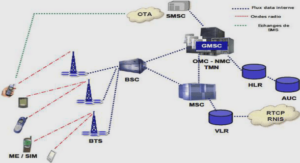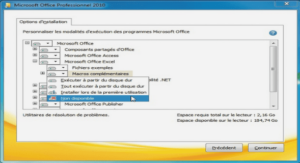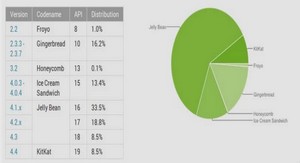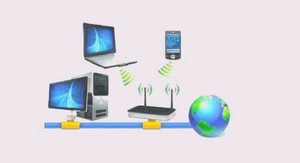The MPLS Conceptual Model
Introducing MPLS Networks Multiprotoco
l Label Switching (MPLS) is, as WAN technologies go, a new technology. RFC 3031 defines the MPLS architecture. Interestingly, the authors of the RFC were from Cisco Systems, Inc., Force10 Networks, and Juniper Networks. This goes to show that multiple vendors can work together when they need to do so or when the technology is just that intriguing (which is the case with MPLS). Traditional WAN Connections To know where one is going, one must know where one has been. In learning any relatively new technology, it is useful to begin on common or well-known ground and progress into the unknown from that point. MPLS is somewhat of a departure for WAN connections in a number of ways. Traditional WAN connections are Layer 2 and classified as point-to-point or multipoint connections. These networks do not understand Layer 3 quality of service (QoS). At best, they understand traffic shaping. In really ornate cases, there can be some circuit prioritization done at the edges. However, across the WAN itself, there is little or no traffic protection. Traditional WANs typically exist in a limited number of architectures based on the company size and budget for bandwidth between said sites. The most common architectural models include: ■ Hub-and-spoke ■ Partial mesh ■ Full mesh ■ Redundant hub-and-spoke Each model or topology has its pros and cons. Most of those pros and cons come down to cost vs. connection in the end. As the number of connections and the bandwidth per connection increase, so does the cost; however, higher bandwidth and pathway diversity add to the resilience and flexibility of the network, especially in times of need such as hurricanes, tsunamis, or other less than desirable situations. Figure 8-1 illustrates the hub-and-spoke network model. 150x01x.book Page 170 Monday, June 18, 2007 8:52 AM Introducing MPLS Networks 171 Figure 8-1 Hub-and-Spoke Topology As is evident in Figure 8-1, there is a central, or “hub,” site to which all other sites are connected. For any “spoke” site to pass traffic to another “spoke” site, it must send that traffic via the hub site. This topology is by far the most commonly used model because it offers the lowest cost overall. However, it is the least redundant topology. Should the router at the hub site be lost or damaged, the entire network is effectively unavailable. To augment the topology with minimal incremental costs, you could use a partial mesh topology, as illustrated in Figure 8-2. Figure 8-2 Partial Mesh Topology 150x01x.book Page 171 Monday, June 18, 2007 8:52 AM Figure 8-2, the original hub-and-spoke topology is still evident; however, critical sites have been augmented with connections that would allow them to maintain some degree of network connectivity in the event of the loss of the hub site. This is a bit more expensive than the traditional hub-and-spoke topology, but it does maintain some peace of mind, not to mention minimal connectivity impact, in case of a catastrophic failure. In cases where the network and its capability to react to convergence events is more important than cost as a factor in the architecture, there is the full mesh topology, as illustrated in Figure 8-3. Figure 8-3 Full Mesh Topology Figure 8-3 makes a compelling case as to why this network topology is as resilient as it is costly. Every site is connected directly to every other site. The fact that each circuit must be maintained independently of its peers makes this model rather daunting as it grows. The cost begins to grow almost at an exponential rate. To calculate the number of circuits needed for a given implementation, the formula is as follows: c = n(n–1) / 2 where c is the number of circuits and n is the number of networked sites. For an installation of 30 sites: 30(30–1) / 2 = 435 circuits It is easy to see how a large enterprise deployment could get out of hand both administratively and monetarily.
MPLS WAN Connectivity
With the history lesson done, the conversation now moves to MPLS. Simply put, MPLS extends Layer 3 natively across the distance between central, branch, and SOHO sites. The MPLS network, though owned by the service provider, is an extension of the enterprise network. Picture the entire WAN, which was previously a Layer 2 obstacle, as a single router with multiple interfaces. It contains a routing table with all of the route entries of the enterprise network. The WAN provides any-to-any connectivity between sites without the hassle of administering a large number of circuits. Like any routed network with diverse paths, the MPLS network converges dynamically, supports multiple routing protocols, and honors QoS traffic tags and policies. Figure 8-5 illustrates the basic concept of the MPLS network. Figure 8-5 MPLS WAN Concept 150x01x.book Page 174 Monday, June 18, 2007 8:52 AM Introducing MPLS Networks 175 Each site requires only one connection to the service provider network. This connection will most likely be Frame Relay or a similar technology at the local loop; however, that is where the similarity stops with traditional WAN technologies. MPLS Terminology To fully appreciate and understand the technology behind MPLS, it is necessary to have a grasp on associated terminology. These terms are addressed throughout this chapter and are merely offered here for reference. Some of the common MPLS terms defined in RFC 3031 are as follows: ■ Label—A short, fixed-length, physically contiguous identifier used to identify a group of networks sharing a common destination, usually of local significance. ■ Label stack—An ordered set of labels attached to a packet header. Each label in the stack is independent of the others. ■ Label swap—The basic forwarding operation, which consists of looking up an incoming label to determine the outgoing label, encapsulation, port, and other data-handling information. ■ Label-switched hop (LSH)—The hop between two MPLS nodes, on which forwarding is done using labels. ■ Label-switched path (LSP)—The path through one or more LSRs at one level of the hierarchy followed by a packet in a particular FEC. ■ Label switching router (LSR)—An MPLS node that is capable of forwarding labeled packets. ■ MPLS domain—A contiguous set of nodes performing MPLS routing and forwarding. These are typically in one routing or administrative domain. ■ MPLS edge node—An MPLS node that connects to a neighboring node outside of its MPLS domain. ■ MPLS egress node—An MPLS edge node that handles traffic leaving an MPLS domain. ■ MPLS ingress node—An MPLS edge node that handles traffic entering an MPLS domain. ■ MPLS label—A label that is carried in a packet header and represents the packet’s FEC. ■ MPLS node—A node running MPLS. An MPLS node is aware of MPLS control protocols, operates one or more Layer 3 routing protocols, and is capable of forwarding packets based on labels. Optionally, an MPLS node can also forward native Layer 3 packets.




